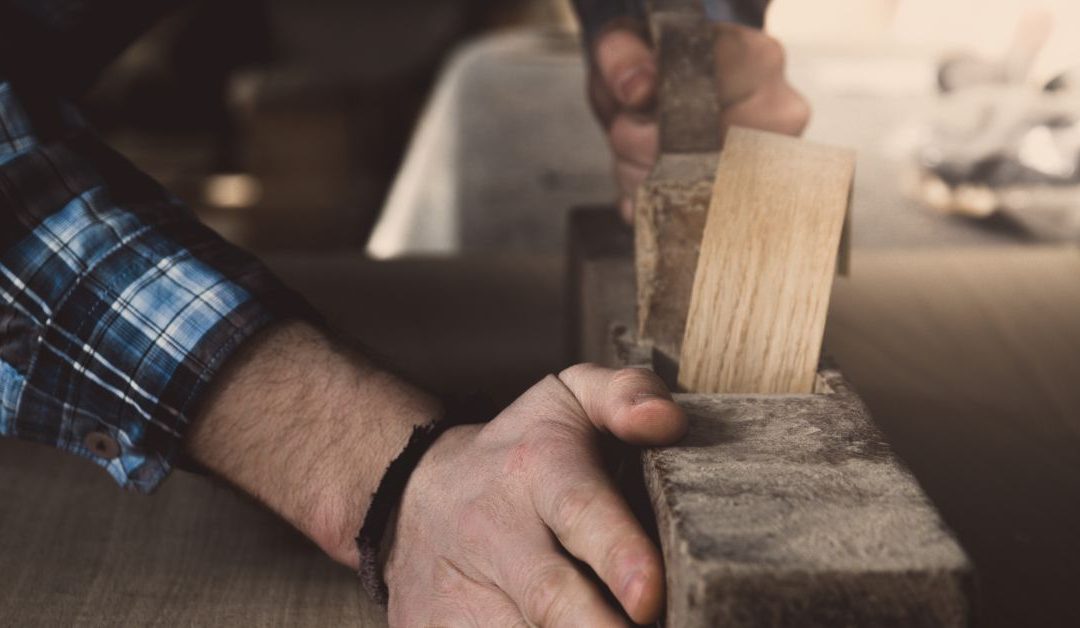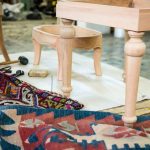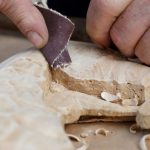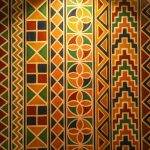Moroccan woodworking during the colonial era is super interesting. This is because it shows how skilled artisans made beautiful stuff from different woods like cedar and ebony. Europeans admired Moroccan artisans for their carving skills. Plus, the stunning furniture, decorations, and buildings that showcased Morocco’s culture. This article will talk about how these craftsmen became experts during that time and the special qualities of their work.
Traditional Woodworking Techniques
In the colonial era, Moroccan woodworking was something artisans and workshops were proud of.
They got their materials from local forests or brought them from other countries, depending on what they were making. For example, they used cedar from Lebanon to create furniture like tables and chairs, and rosewood for decorative pieces.
These artisans learned their craft from their families. Then passing down their knowledge from one generation to another. They knew how to recognize different types of wood based on color, texture, and other features. They knew the best tools to use for carving intricate designs and how to apply special finishes to keep the wood looking beautiful.
Artisans combined traditional and modern techniques. This is to create stunning pieces that are still admired today.
Types Of Woods Used
Moroccan woodworking during the colonial era was a mix of skill and beauty. Craftsmen used traditional techniques like joinery and inlay. This is to create stunning furniture that still amazes us today.
One example is Sultan Moulay Ismail’s throne, which showcases the intricate marquetry made by Moroccan artisans of that time.
The type of woods used in this art were important too. Cedar, ebony, and rosewood were much used because they were easy to find and durable. Sometimes, traders brought materials like mother-of-pearl from distant lands. These not only add beauty but different cultural influences too.
Today, Moroccan woodworking has changed in many ways, but we can still see modern versions all over Morocco. Moroccan woodworking inspires people worldwide. From their handcrafted tea trays to contemporary furniture adorned with colorful mosaics.
Inlay Techniques
In the colonial era, Moroccan woodworking became known for its inlay techniques.
Carpenters and artisans used various woods. They do this to create detailed designs that showcased their skills and culture.
They decorated furniture like tables, chairs, and cabinets, as well as smaller objects like jewelry boxes.
These beautiful pieces were then sold to buyers all over Morocco and beyond, boosting the local economy.
Cities like Marrakech became famous for their talented craftsmen. These people combined traditional motifs with modern styles.
Today, families still pass down these techniques, and workshops continue to teach new students.
Contemporary makers focus on quality. This is to craft stunning works that honor Morocco’s rich woodworking history.
Carving And Decorating Techniques
Inlay techniques are hard work, but they can make beautiful results. That’s why traditional artisans and people who want elegant finishes still like to use them.
Carving and decorating techniques make traditional craftsmanship even more amazing. Modern approaches mix old-world designs with new tools and technology. That’s why designers can create special pieces that show off their skills. Carvings add texture and make furniture and other wood objects look interesting with patterns like flowers or shapes.
The use of chisels and gouges allows Moroccan craftsmen to create intricate details that enhance the beauty of each piece. The combination of these two methods creates an ideed captivating product:
- Detailed carved shapes
- Detailed etchings
- Delicate grooves set within ornamental borders
These masterful works reflect the high quality standards of Morocco’s colonial era woodworkers. They are the ones who sought to elevate everyday items into works of art.
Dyes And Finishes Used
In colonial times, Moroccan craftsmen used dyes and finishes to color and protect their pieces. They had a lot of colors to pick from, like natural pigments and synthetic options. After dying the wood, they would apply finishes to make it shiny and protected.
| Dye Selection | Finish Types | Effect on Aesthetics |
| Natural Pigments | Wax Polishes | Adds Color |
| Synthetic Dyes | Shellac | Enhances Sheen |
| Plant Extracts | Varnish | Preserves Wood |
In the past, people chose different dyes for their projects based on what colors they wanted. Natural pigments gave muted colors, while synthetic dyes had brighter ones. They used different finishes for specific purposes. Wax polishes made things shiny, shellac added sheen, and varnish protected the wood.
These dyes and finishes created lasting beauty in admired pieces. Artisans made stunning works, like carved trays and fancy furniture sets, that people still love hundreds of years later. These elements had a big impact on Morocco’s woodworking industry during the colonial period and still matter a lot now.
Sculptural And Figurative Woodwork
During the colonial era, Moroccan woodwork used a wide range of colors, textures, and patterns. They use this to create a special style that showed both craftsmanship and beauty. This new sophistication helped people appreciate the cultural meaning behind each piece.
They as well made sculptural and figurative woodwork, adding even more artistry. These pieces often showed everyday life or religious figures with deep cultural meaning.
From animal carvings to fancy furniture, these works represent a unique time when old and new styles came together.
- Intricate detailing on ceremonial masks
- Animal sculptures crafted out of exotic woods
- Elaborate marquetry designs adorning tables
- Furniture designed with subtle curves
These objects remind us of faith, heritage, identity, and love while making our surroundings beautiful.
They show us how our craft has evolved over time and the rich legacy it holds today.
Intricate Architectural Structures
During the colonial era, Moroccan woodworking was famous for its beautiful designs and skillful work. Artisans created stunning buildings with special details. These include geometric patterns and ornate door frames.
They used native woods like cedar, walnut, and oak, making these structures unique and unlike anything else. Today, people still love the traditional designs from that time.
These pieces are much cherished for their beauty and remind us of the peak of Moroccan woodworking. Every item reflects the talent and hard work of dedicated artisans over the centuries.
Characteristics Of Colonial-Era Woodwork
Have you ever wondered how woodworkers in colonial-era Morocco made their beautiful pieces? They had special skills that made their work amazing:
- Paying attention to details – They looked at even the smallest things to make sure their creations were perfect.
- Amazing craftsmanship – The quality of their work was unbeatable, and they used techniques passed down for generations.
- Beautiful designs – They carved unique patterns from fine woods like cedar and juniper.
- Incredible skill – These artisans were so talented, spending years to become masters.
Today, we can still see the legacy of Moroccan woodworking from the colonial era. Their creations are inspiring artists all around the world. Thus, we can appreciate the beauty and hard work they put into their craft many centuries ago!
Preservation Of Traditional Crafts
During the colonial era, Moroccan woodworking was a special craft that showed their culture and helped the economy. Craftsmen were proud of their work and used old techniques to make beautiful pieces. People at home and abroad wanted their furniture and decorations.
To keep this craft alive for the future, artisan groups started teaching young people. They set up programs where they could learn from experienced artisans and carry on the tradition.
Certain communities succeeded in preserving Moroccan woodworking culture, keeping it alive.
| Communities | Description |
| Al Andalus | Fosters appreciation of craft |
| Maktabat | Celebrates traditional styles |
| Jnane | Champions female makers |
| AOAF | Promotes sustainable materials |
These organizations help educate others about the history and importance of Moroccan woodworking. They keep this meaningful tradition alive and thriving. This is even during difficult times like colonialism.
Impact Of Colonialism On Woodworking
For many years, Moroccan woodworking was famous for its great craftsmanship and beautiful designs. But during the colonial era, things changed because of the influence of other countries.
This time brought both good and bad things for Moroccan artisans. They learned new techniques from foreigners and started using modern tools and materials. As a result, they made more intricate pieces with fancy designs like marquetry and inlay.
The interesting thing is that even with these changes, the locals didn’t lose their style. They still added their special touch to every piece, making them unique and representing their culture.
Today, these artworks are a symbol of Morocco’s history and traditions. They show how the people kept their heritage alive and didn’t let it disappear, even in difficult times.
Frequent-Asked Questions
What Is The Cost Of An Average Moroccan Woodworking Piece?
The cost of a Moroccan woodworking piece from the colonial era can vary depending on how it’s made and how it looks.
During that time, people often used ecological practices. These include using sustainable woods and natural finishes, which can affect the price.
Colonial influences introduced pricier materials and techniques than traditional ones.
People valued each item based on its beauty and quality, so it’s hard to determine an average price without seeing it in person.
What Is The Average Time It Takes To Create A Moroccan Woodworking Piece?
Crafting Moroccan woodworking pieces in the colonial era was a tough job. Skilled artisans with knowledge and experience took several days to weeks to finish a piece, depending on its complexity.
The crafting techniques were much influenced by local culture, making each piece special. Artisans combined traditional methods with modern styles to create beautiful works. The results became iconic symbols of Morocco’s craftsmanship and creativity during that time.
What Are Some Of The Most Popular Moroccan Woodworking Designs?
Moroccan woodworking designs have come a long way since the colonial era. People use traditional techniques like marquetry and inlaying. These are for making beautiful furniture with great skill. Nowadays, geometric shapes and graphic patterns are becoming more popular too.
Popular Moroccan woodworking designs include:
- Mother of pearl work
- Decorated chests
- Decorative doors
- Latticework screens
- Low coffee tables
Skilled artists passed down their beauty and skill for generations.
What Are The Environmental Impacts Of Moroccan Woodworking?
During the colonial era of Morocco, woodworking was a major source of income and material for both artisans and consumers.
Often, sustainable practices were not followed, leading to environmental consequences.
This led to deforestation which harmed local wildlife habitats.
Today, we still need to do more work to make Moroccan woodworking sustainable and efficient.
How Has Moroccan Woodworking Changed Over Time?
Today, Moroccan woodworking is a modern industry that has advanced over time.
Long ago, in colonial times, Moroccan craftsmen made lovely art using old methods and materials from the area. They used hand-carved tools to make detailed designs on furniture. Plus, crafted useful items from woods found in the Atlas mountains. Their attention to detail and dedication to quality made Moroccan woodworking special even back then.
Generations have passed down the special art of Moroccan woodworking. Its beautiful designs, detailed carvings, and colorful creations have amazed people for centuries. The tradition will keep going, and its legacy will live on through future generations.
I am proud to be part of this legacy that celebrates both beauty and history with each piece crafted.







